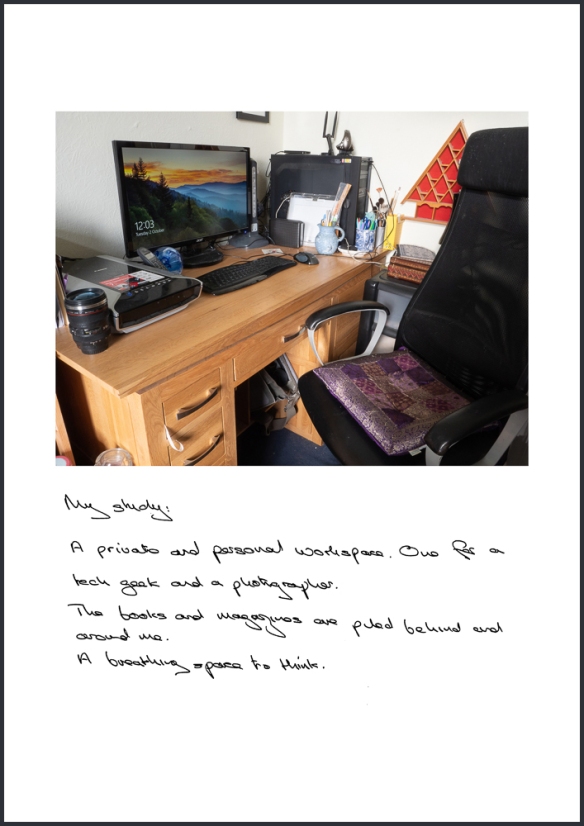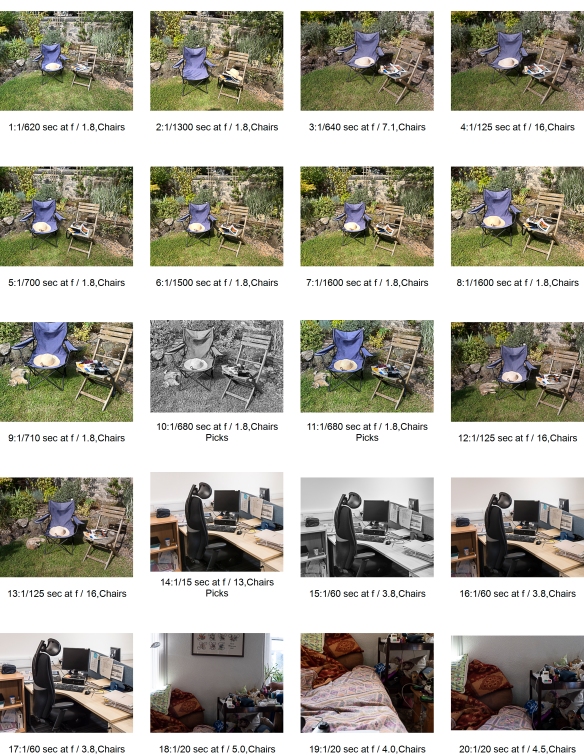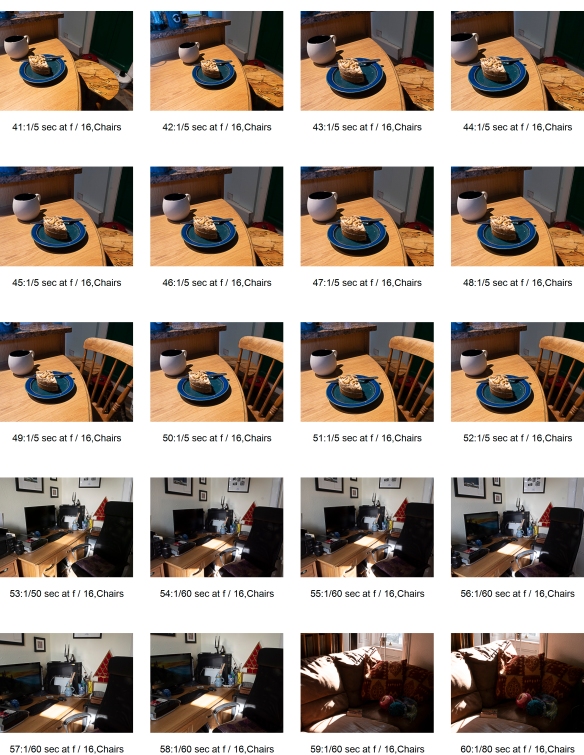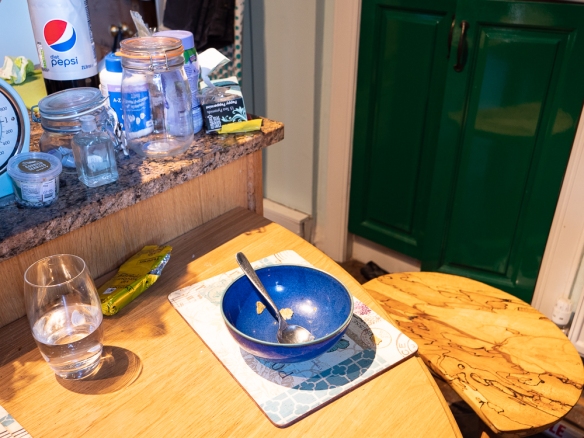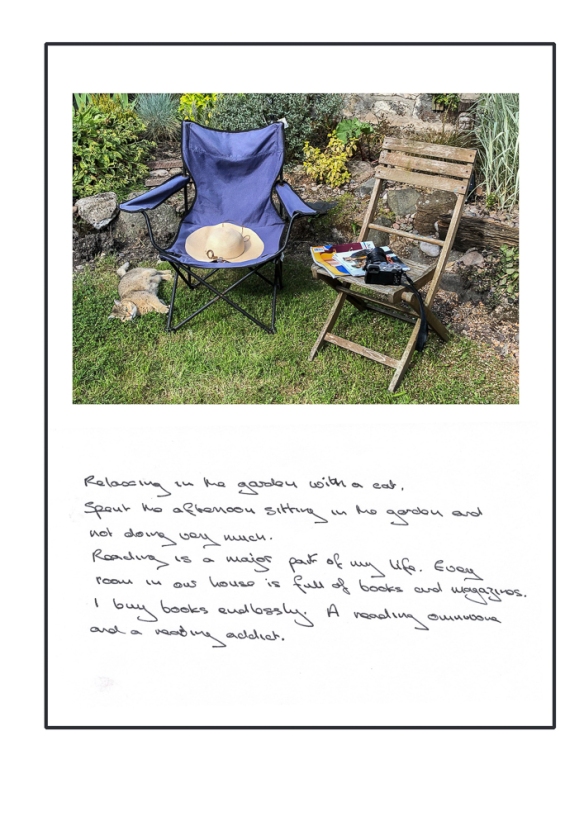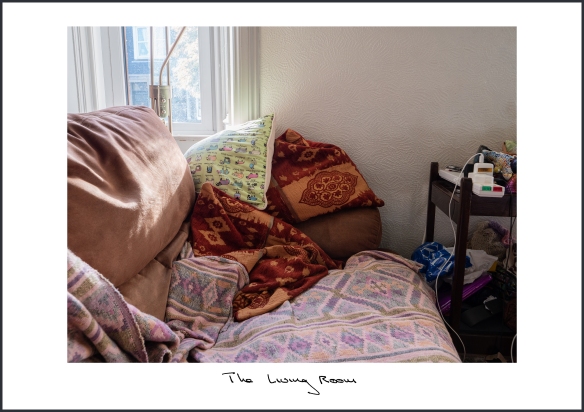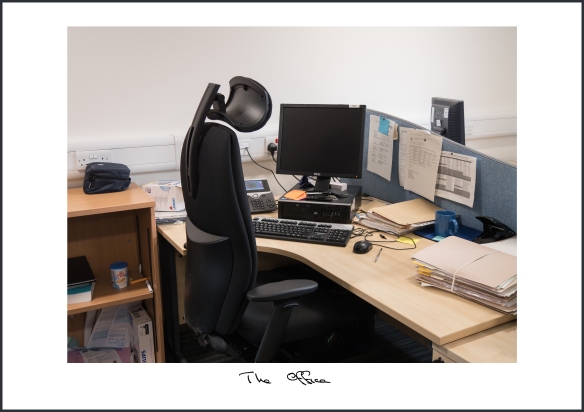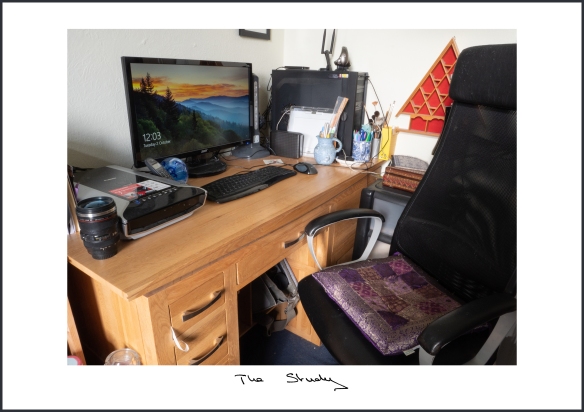19/11/18
Tutors comments in blue. My responses in black.
Overall Comments.
A clear indication of how the paraphernalia/context around the chairs infers a story is in the accompanying text “I don’t need to be in the picture to describe what I am doing. The place tells me the activity and brings back memories. The chairs describe my life”.
A good example of why the accompanying text can be critical – there seem to be two types of image making
- The single image which is either whole of itself and very explicit, often single shot street photography works like this, or simple invokes your (the viewers) imagination
- Series images which tell a story – words may well add to this and set the background
This also led on to discussion about why the images with added handwritten notes give a better/more rounded sense of what I was trying to do.
Demonstration of technical and Visual Skills
One picture stands out as different to the rest as the colour balance is not correct (yellow cast) and greater contrast.
Very fair comment: obvious when pointed out and I might have spotted it if I had printed the pictures out. Easy to fix and makes the whole set more balanced.
Quality of Outcome
There’s room for interpretation of the significance of objects (see your example of the burnt doll and blades of a blender) – could be extracts from the diary. This adds contextually to viewer’s experience (try to see from outside, without the familiarity of the mundane).
This feeds into the above comments about story telling and how you interpret what you are looking at. An example of this might be the rubbish tip photographs of Keith Arnatt – are they abstract? Do they tell a story? Are they ‘Art’?
Demonstration of Creativity
Good spatial arrangements, leading to dynamic compositions of scenes that are not naturally dynamic
I am not sure how conscious these choices were, or how much they were dictated by the available space. Hopefully is is partly that my ‘photographers’ eye’ is improving.
Coursework
Rather than commenting on the story itself, I suggest trying to see the stories in 3.1 as a photographer: comment on the ways in which the photographer uses the medium, how in/effective that is, and how you can relate these ways of working to your own storytelling.
Analysis could be more personal as seen as a photographer telling the story: (how) does this work? why is it done (and presented) in this way? How would I do this? Has this changed my outlook and if so, how?
At present my analysis of any piece of work tends to be factual – who, what, how and sometimes why. I have not (to date) really thought about how the photographer has chosen to tell the tale, would I have done it the same way – and if not, why not? Has their piece of work actively changed my work – or have I just looked at it and filed it in my mind as ‘interesting’ without using it as an active piece of learning.
Further suggested reading:
For my thoughts on this work see:



